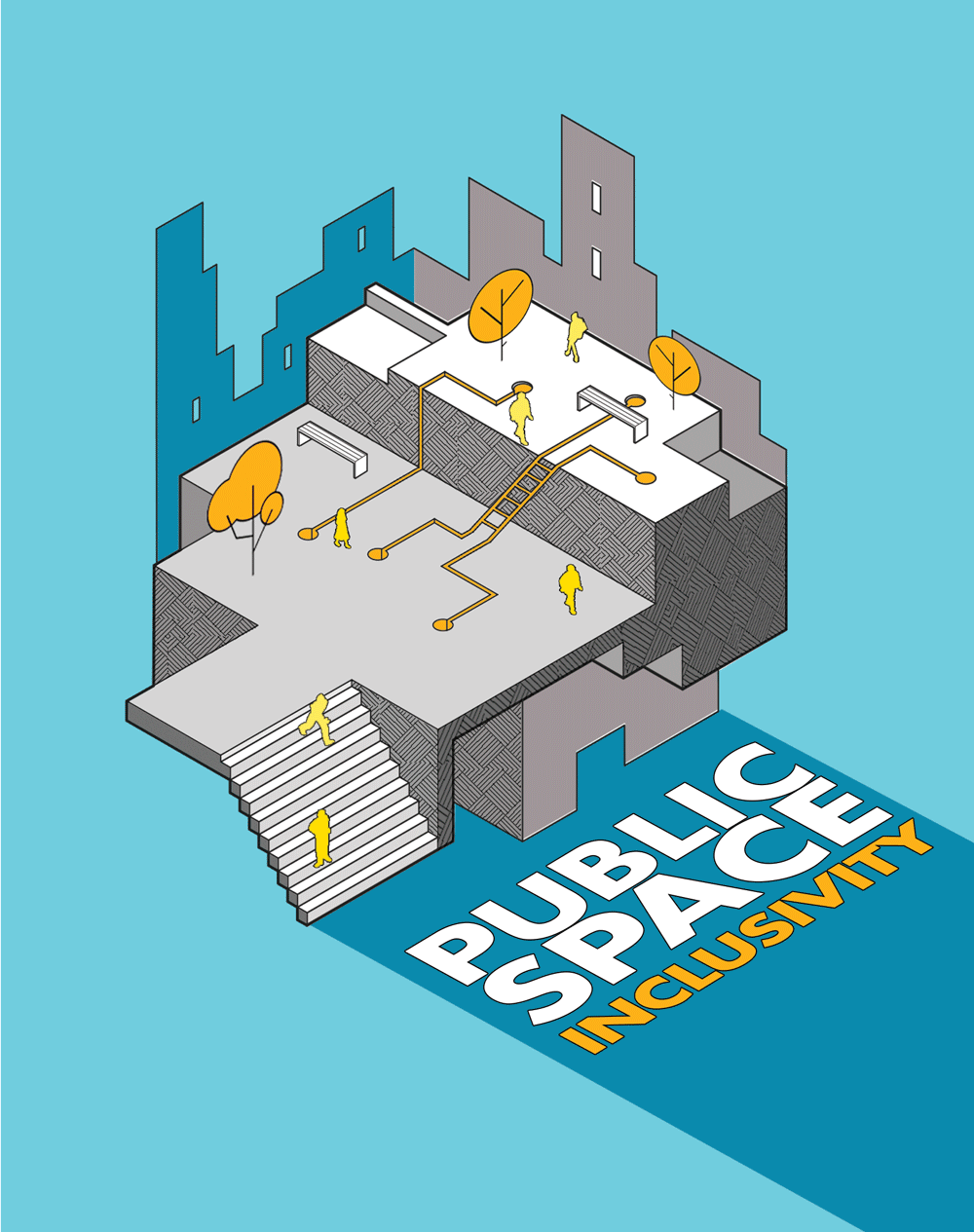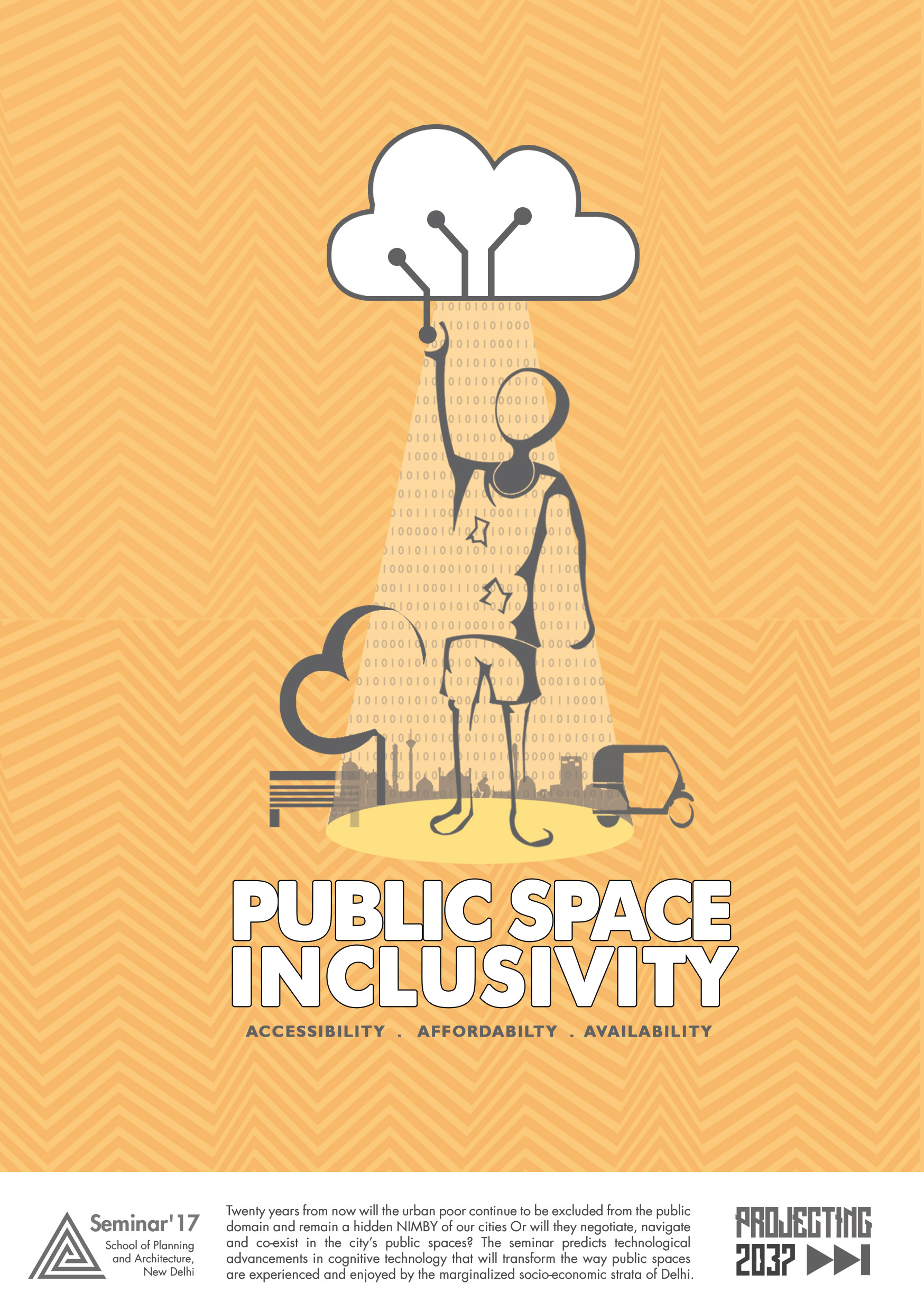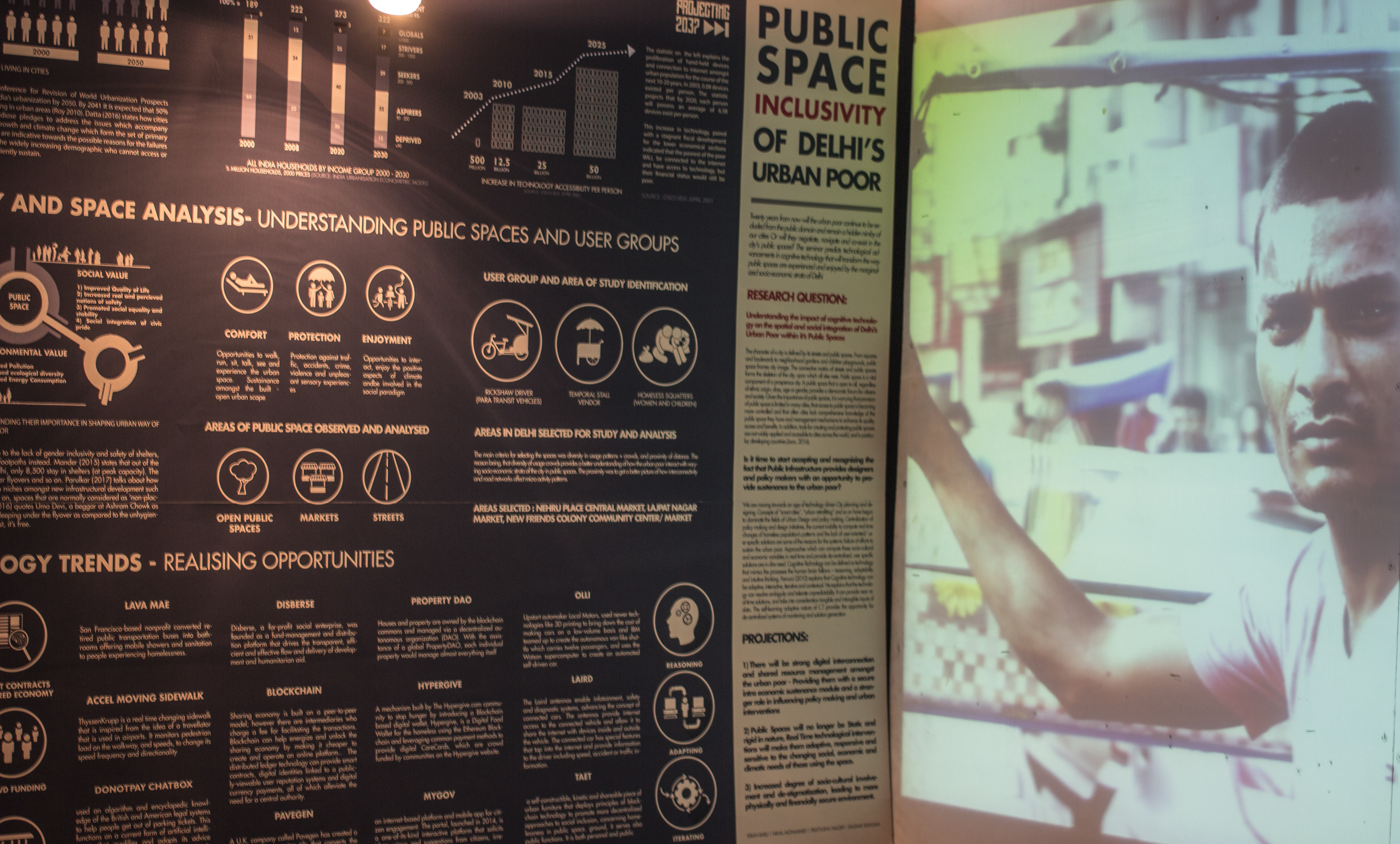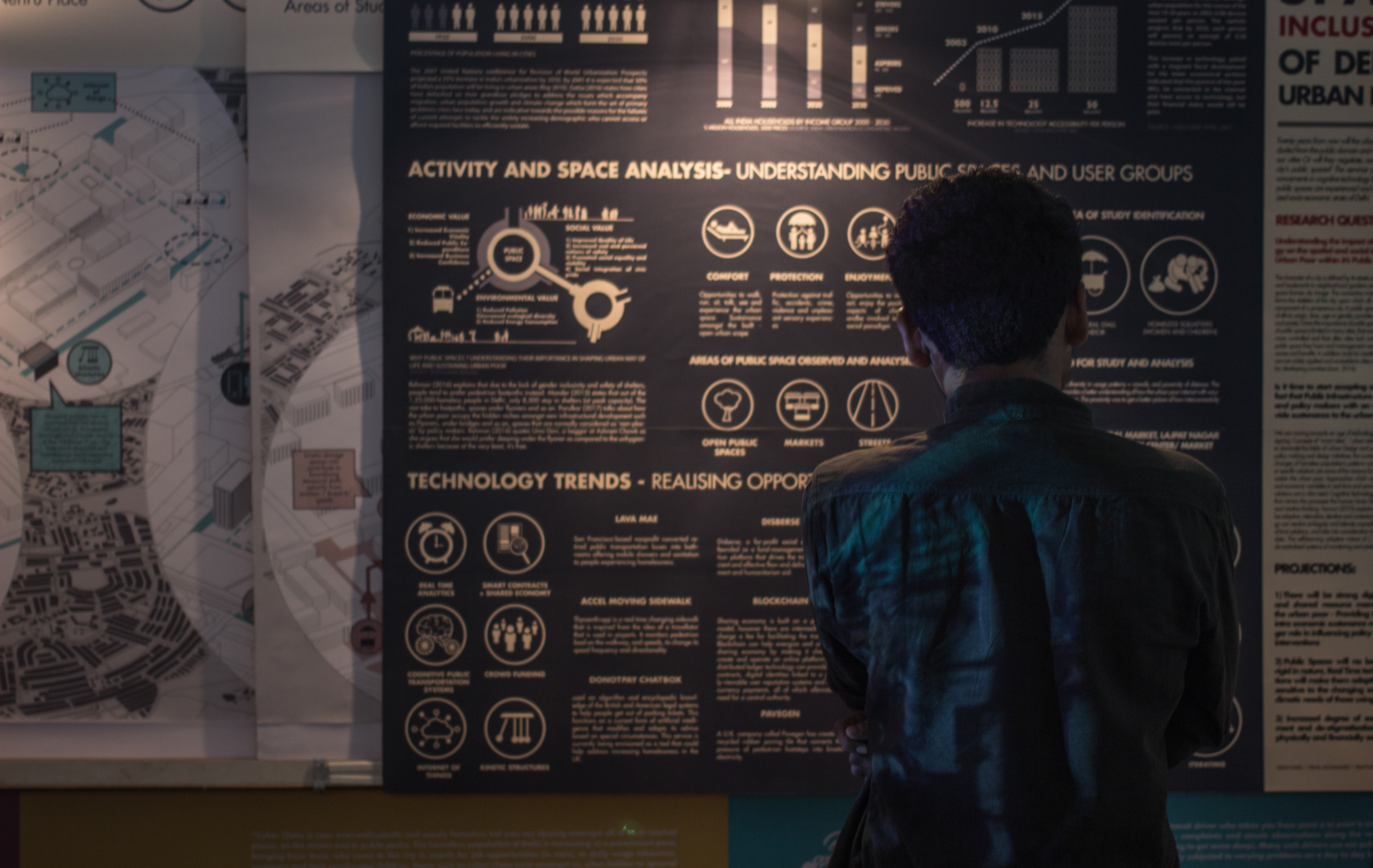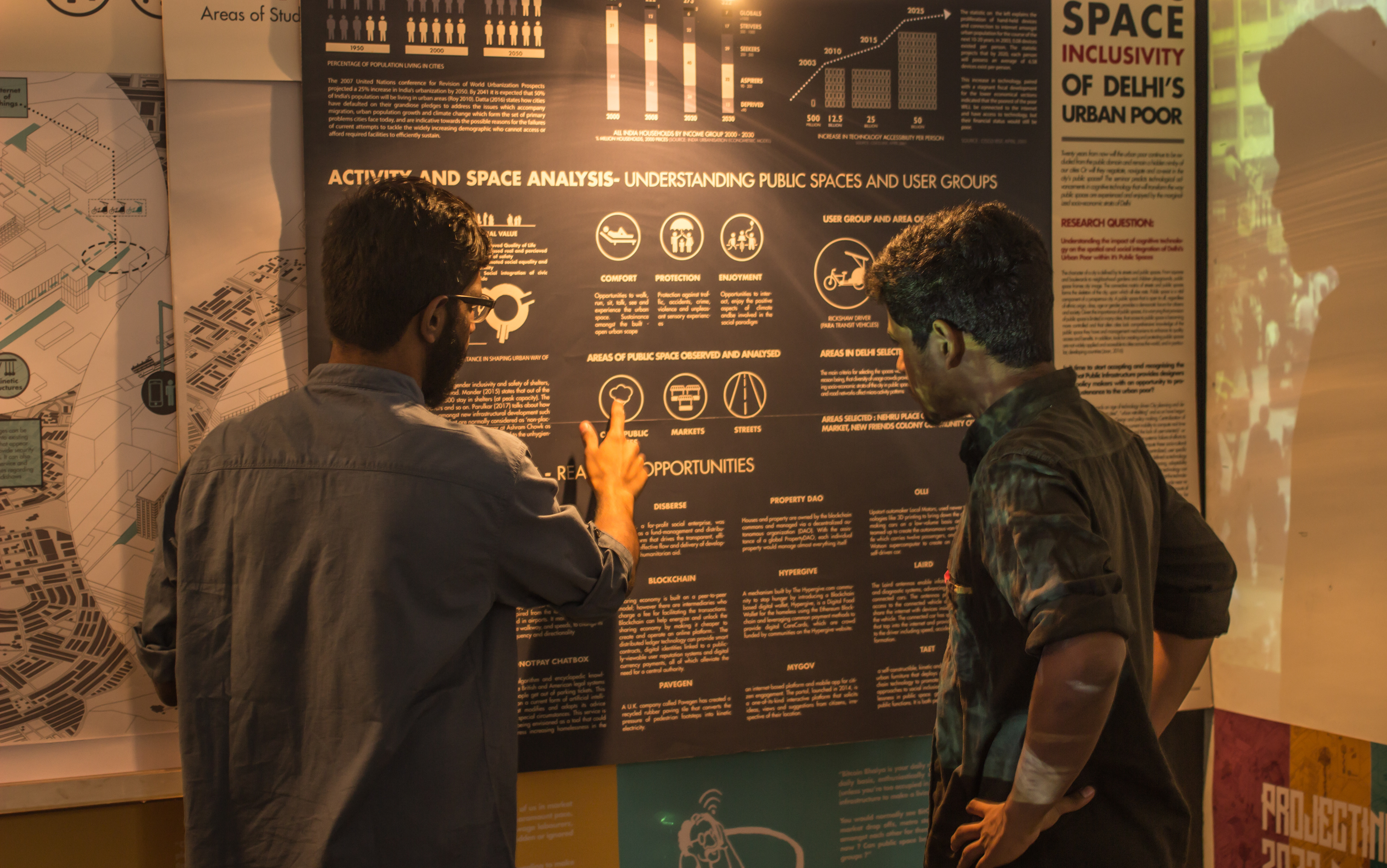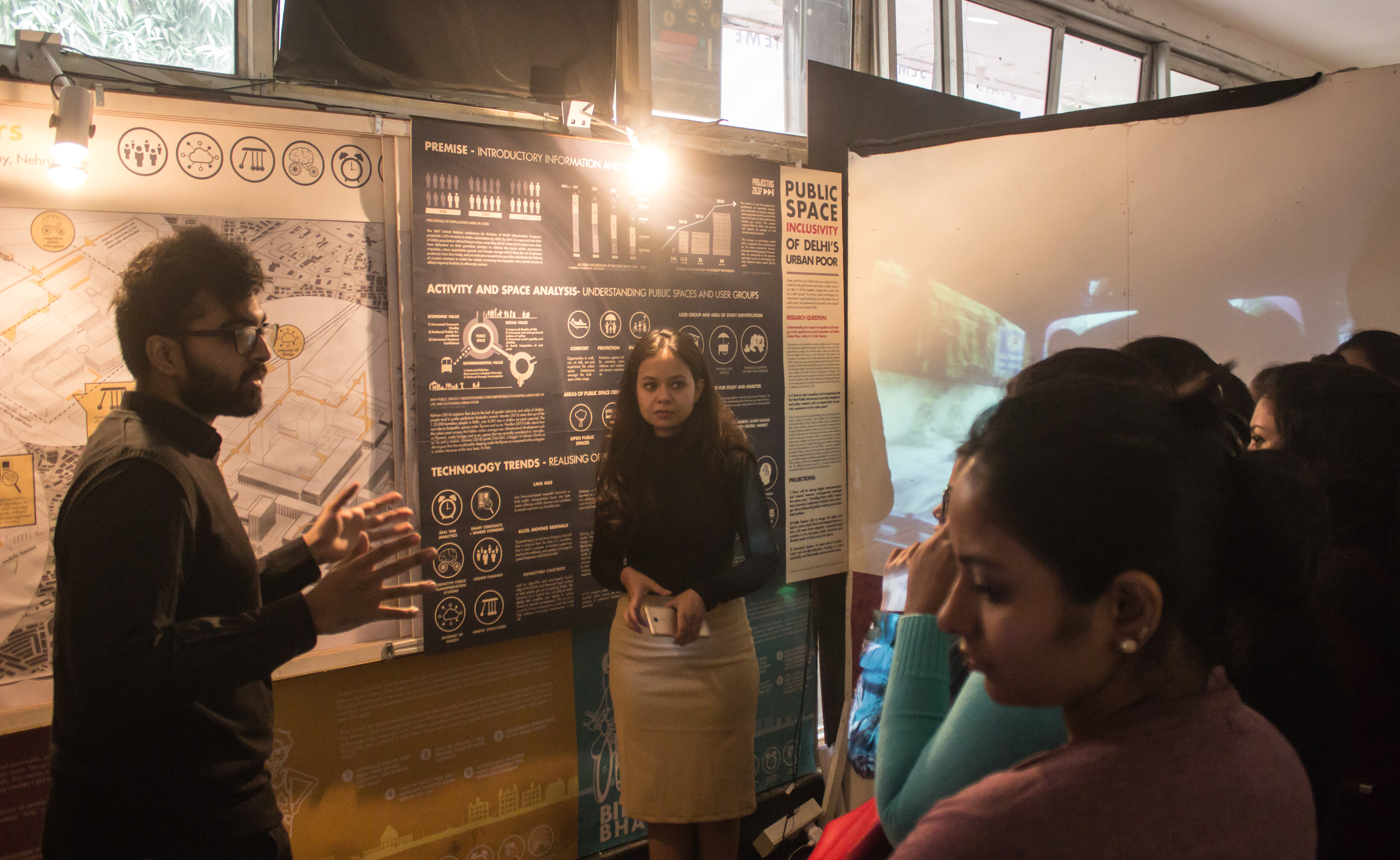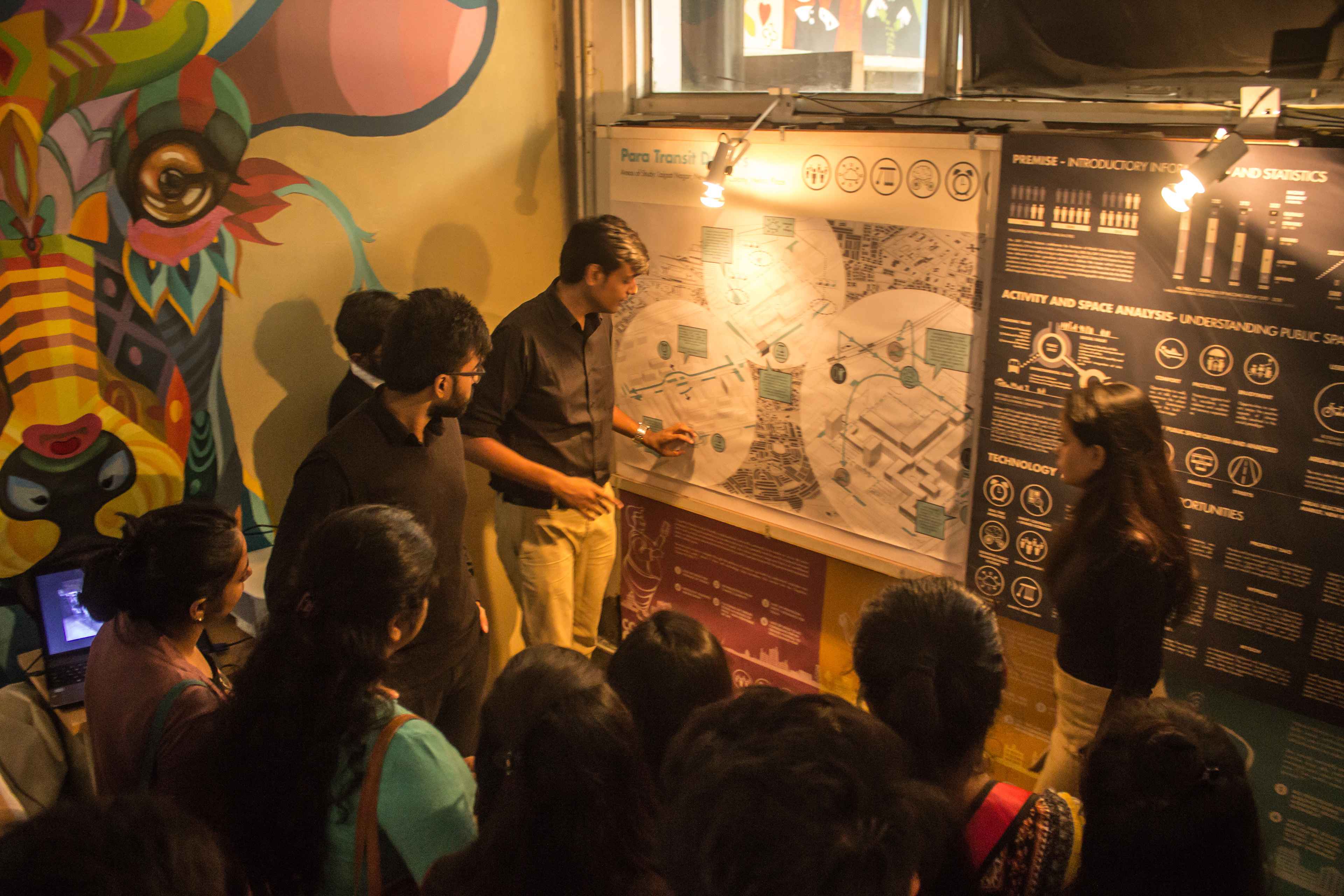The theme of the Seminar is: Projecting 2037. The seminar aimed to capture projections made by the students of School of Planning and Architecture, Delhi, regarding the future of architecture and its related avenues 20 years from now. These projections were a summarization of an entire semesters research work. These presentations were made using a diverse nature of visual communication methods such as installations, movies, interactive videos, illustrations, games and so on. All these presentations were organized in a three-day exposition which was held in School of Planning and Architecture, New Delhi from 9th to 11th November. It showcases what today’s generation of architects project the future to be.
Group Members
Kiran Babu Nihal Mohammed
Pratyusha Halder Raghav Rayasam
Coordinators: Ms. Anjali Mittal, Mr. Rajiv Bhakat
Guide: Niddhi Batra
Research Summary
Twenty years from now, will the urban poor continue to be excluded from the public domain and remain a hidden nimby of our cities? Or will they negotiate, navigate and co-exist in the city's public spaces? The seminar projects technological advancements in cognitive technology that will transform the way public spaces are experienced and enjoyed by the marginalized socio-economic strata of Delhi.
The seminar talks about how various directions and trends which come, or could potentially come under the paradigm of cognitive technology could spatially and socially manifest in major urban centers of Delhi. Three user groups were identified, namely: Para Transit Drivers (Rickshaw drivers), Temporal Stall Vendors, Homeless squatters. The areas of study chosen were Nehru Place market, Lajpat Nagar central market and New Friends Colony Community Centre. The reasons for selecting said places was the diversity of activity patterns displayed in each of the spaces (Nehru Place: Predominantly Office going crowds, Lajpat Nagar: Predominantly Retail shoppers, NFC Community Centre: Predominantly Residential crowds).
Six major technology trends were identified, which could potentially generate spatial and social solutions to the problems identified through our primary research. These are:
Real Time Analytics
Smart Contracts and Shared Economy
Cognitive Public Transportation Systems
Crowd Sourcing + Crowd Funding
Internet of Things
Kinetic Structures/ Infrastructure
Many technology initiatives that exist today that fall under the paradigm of these six identified trends were studied. Certain Examples are: TAET Kinetic Furniture, ACCEL moving sidewalk, DONOTPAY Chatbox, BLOCKCHAIN, OLLI vehicles etc. These technologies open up a plethora of possibilities to transform urban public infrastructure and spaces. These technology trends were then understood and projected onto axonometric representations of the spaces studied and the possibilities were illustrated / Projections were made. What follows is a brief compilation of the research question, background and final projections made.
What could be the impact of cognitive technology on the spatial and social integration of Delhi’s Urban Poor within its Public Spaces?
Projections
1) There will be strong digital interconnection and shared resource management amongst the urban poor - Providing them with a secure intra economic sustenance module and a stronger role in influencing policy making and urban interventions
2) Public Spaces will no longer be Static and rigid in nature, Real Time technological interventions will make them adaptive, responsive and sensitive to the changing social, economic and climatic needs of those using the space.
3) Increased degree of socio-cultural involvement and de-stigmatization, leading to more physically and financially secure environment.
